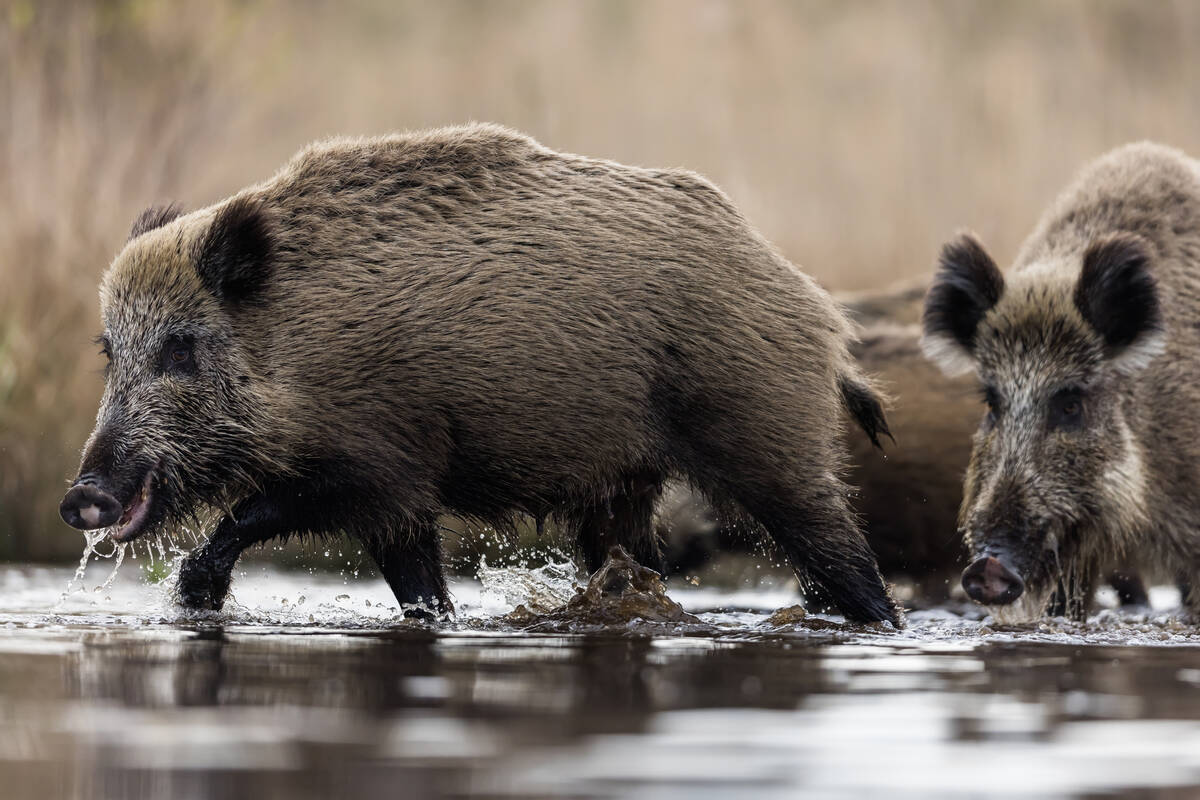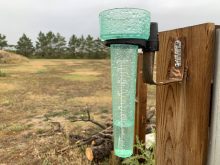Most producers are familiar with foot rot.
They’ve seen the disease in their herd or they know someone who has had cattle with the condition.
It is so ubiquitous because the bacterium that causes it can be found anywhere cattle are found. It sometimes seems inevitable that some cattle will suffer from this devastating disease, but prevention is possible.
Foot rot causes characteristic symptoms. Animals become suddenly and often severely lame. They are so sore and reluctant to move that they can often be found lying down.
Read Also

Manitoba bans wild boar possession
Manitoba has tightened the regulatory status of Eurasian wild boar in an effort to help fight back against invasive wild pigs.
Appetite is depressed because a fever is normally present and the foot is painful. Just one foot is affected in most cases. Swelling of the foot causes the claws to spread.
Several bacteria can trigger foot rot, but fusobacterium necrophorum is the main culprit. This bacterium is shed in the manure of cattle carrying it in their intestine. It is extremely difficult to eradicate once on pasture or in a feedlot.
The bacterium gains access to subcutaneous tissues through a crack or puncture in the skin. Though we don’t fully understand how fusobacterium causes such extensive lesions, we assume it produces a toxin that damages tissue and causes swelling and death.
Foot rot incidence peaks during wet, humid weather, especially when animals are crowded together.
More foot rot is also seen when cattle are on rough ground or recently harvested fields with sharp stubble protruding from the ground. This, as well as walking on frozen mud, can damage the soft tissues of the foot and introduce the bacteria.
Foot rot is diagnosed by seeing the typical swelling and redness between the claws, feeling a hot foot and smelling a putrid odor.
Some cases of foot rot have been known to resolve without treatment, but most affected cattle require antibiotics. The medication takes care of skin and deeper tissue infections and also prevents secondary disease such as joint and bone infections.
Penicillin, oxytetracycline and ceftiofur are the antibiotics that are usually used to treat foot rot. The antibiotic choice is dictated by slaughter plans because withdrawal times have to be considered.
The foot should be re-examined to look for other diseases if dramatic improvement isn’t seen within a few days of starting antibiotic treatment. It takes up to five days to get foot rot fully under control.
Anti-inflammatory medication can also be added if the inflammation in the foot is severe.
Longer courses of antibiotics will be required if the infection has moved into a joint or the bone. Surgical removal of the claw is appropriate if one claw is affected.
The economic impact of foot rot depends on the type of animal involved. Feeder cattle can suffer from depressed gains, while breeding cows may have lower fertility, ending up open or with extended calving periods.
Breeding bulls may be reluctant to move to cows, and the fever from foot rot can adversely affect sperm production, which could leave them temporarily infertile and result in cows that remain open or are late conceiving.
The best way to prevent foot rot is to reduce foot injuries. This can be achieved by cleaning pens, providing bedding and avoiding grazing on rough or recently harvested ground.
Vaccination can lower the incidence of foot rot and may be especially useful in breeding bulls where the impact of the disease can be the most severe.
It’s important to remember that not all lameness in cattle is caused by foot rot.
Cattle can injure the soles of their feet, develop joint infections and suffer from muscle and tendon injuries. A disease commonly confused with foot rot is a toe abscess where a pus pocket forms under the sole of the foot.
Pinning down a diagnosis is important in determining the prognosis and treatment plan.














